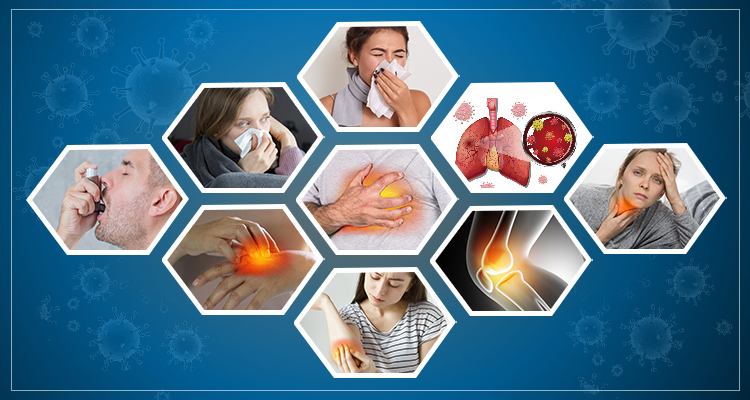
Types of Winter Diseases
People get sick with changing seasons as the shift in temperature causes viruses to flourish which then spread diseases. During the winter season, diseases can appear suddenly and leave you feeling sluggish and lethargic. For example, you can get a sore throat which can later turn into a severe infection making it quite painful to swallow food or water. Moreover, due to the cold season, your body cools down and even simple illnesses are difficult to heal.
Hence, it is recommended to take precautionary measures and avoid seasonal diseases in winter. Here is the list of winter illnesses and ways of their successful prevention and treatment
Common Cold
The common cold is often regarded as a part and parcel of the colder months as it is widespread during that time. The reason is dry and cold climates offer the optimum conditions for the rhinovirus to replicate and thrive.
Although common colds can be annoying, you can still continue with your usual activities and the cold will subside in two to four days. In case it stays for a longer period than that, it is necessary to get medical help.
Symptoms: Common cold symptoms usually show up within one to three days of being exposed to the rhinovirus. Some of them include runny nose, congestion, sore throat, cough, sneezing, mild headache and body pain, malaise and low-grade fever.
Prevention: Stopping the virus from spreading is the best way of common cold prevention. It is crucial to wash hands frequently and avoid contact with people who have a cold. If one of the family members is sick, avoid sharing dishware and use a disinfectant to clean surfaces like light switches and countertops inside the home.
Pneumonia
Pneumonia is a life-threatening disease in which viral and bacterial infections (commonly the Streptococcus or pneumococcus bacteria) spread out in the alveoli or tiny sacs of the lungs clogging them with fluids. Therefore, pneumonia causes shortness of breath in individuals suffering from it. The germs that cause pneumonia can spread by coughing, sneezing or touching infected objects and then touching the mouth or nose.
Symptoms: Some of the symptoms associated with pneumonia are severe cough with green phlegm, high fever accompanied with chills and headache, shortness of breath, diarrhea, the purple coloration of the skin, vomiting, sweating, and muscle pain.
Prevention: For the prevention of bacterial pneumonia, the PCV13 (Prevnar 13) and PPSV23 (Pneumovax) shots may be given. Other than that, you can focus on general health and hygiene standards, such as getting proper exercise, rest and diet to lower the risks of getting bacterial pneumonia.


Comments
Post a Comment